Road Safety Benchmarking and Regional Road Safety Observatories High-level Meeting
Contact Person
Second Workshop of the Asia-Pacific Road Safety Observatory (APRSO)
Contact Person
Progress on development of Regional Road Safety Observatories
Road Safety Management Capacity Reviews and Safe System Projects: Highlights
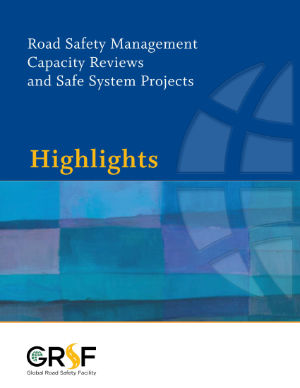
The Road Safety Management Capacity Reviews and Safe System Projects Guidelines have been designed to assist country road safety professionals, World Bank and regional development bank staff, international consultants, community groups, private sector organizations, and all other country partners conduct capacity reviews and prepare follow-up road safety projects in a variety of low and middle-income countries and investment settings.
The purpose of the Guidelines is to:
- specify a management and investment framework to overcome institutional capacity barriers and support the successful implementation of road safety interventions;
- provide practical procedures designed for application at a country level to accelerate knowledge transfer and sustainably scale up investment to improve road safety results; and
- ensure that institutional strengthening initiatives are properly sequenced and adjusted to the absorptive and learning capacity of the country concerned.
The Guidelines emphasize managing for results and the associated strengthening of country road safety management systems, with special attention paid to the role of the lead road safety agency in ensuring institutional effectiveness and efficiency in program delivery. They highlight the importance of addressing all elements of the road safety management system, taking a staged approach to country road safety investment, and targeting the highest concentrations of deaths and injuries across the road network.
Guide for Road Safety Opportunities and Challenges: Low-and Middle-Income Country Profiles
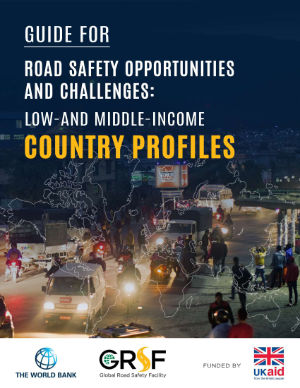
Every year, 1.35 million lives are lost and 50 million people are seriously injured in traffic crashes. This is a continuing challenge facing particularly Low- and Middle-income Countries (LMICs) where 93% of deaths occur. The UN Decade of Action for Road Safety 2011–2020 has seen significant progress. Nonetheless, the targets set in 2011 are far from being realized with the decade ending this year. As we enter a next decade, it is critical to take stock of our past achievements as well as lessons learned in order to tackle this global challenge in stabilizing and reducing the traffic fatalities and serious injuries.
This Guide for Road Safety Opportunities and Challenges: Low- and middle-income Country Profiles, is a very important tool to facilitate that. It is the first data report to cover all 125 LMICs with comprehensive road safety country profiles. The profiles present information on each pillar of road safety—management, roads, speed, vehicles, road users, and post-crash care—, to help countries and development practitioners identify challenges and opportunities, and monitor of progress. The guide gives a precise assessment on the magnitude and complexity of road safety challenges faced by LMICs and helps policy makers understand the road safety framework in context of their own country systems and performance.
Making Roads Safer - Learning from the World Bank’s Experience
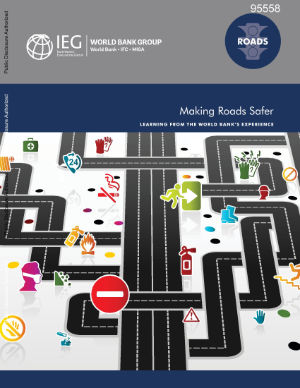
Every year, nearly 1.3 million people worldwide are killed in road crashes, which have become the leading cause of death among people between the ages of fifteen and twenty-nine. More than 90 percent of the world’s road fatalities occur in developing countries, and half of the accident victims are pedestrians, cyclists, and motorcyclists. Road accidents disproportionately affect the poor, making road safety an economic development issue. Many crash victims are of working age, and their death or serious injury too frequently leaves their dependents destitute. Governments in poorer countries have assumed they cannot act to reduce death rates until they are wealthier. However, many of today’s road safety measures can be implemented relatively inexpensively to reduce death rates, if managed correctly.
The United Nations (UN) invited the World Health Organization (WHO) to coordinate a drive to improve road safety globally. It also proclaimed a Decade of Action for Road Safety (2011–2020) to stabilize and then reduce the level of traffic fatalities and serious injuries around the world. More than 100 countries as well as multilateral development banks—including the World Bank—support the interventions.
For many years, the Bank’s involvement in road safety focused primarily on engineering aspects on a project-by-project basis. However, in 2004 the Bank and WHO produced a seminal publication advocating the “safe systems” approach successfully being used by the 34 member countries of the Organisation for Economic Co-operation and Development. Under a safe system, the whole transport system—including road engineering, user behavior, vehicle safety, policing, and accident response—is optimally designed to protect people from death and serious injury.
In 2008, the Bank made road safety a pillar of its transport sector strategy and adopted the safe systems approach in one or two projects in each Region. More recently, the Bank fully adopted the tactic for all roads projects where feasible and encouraged road safety authorities to adopt this practice nationwide.
The Independent Evaluation Group (IEG) is aware of the rapidly worsening road safety situation in the developing world and efforts by the Bank's transport sector to encourage the use of best practices in road projects. This study, a pioneering learning product created by IEG in cooperation with transport operational staff and the Bank’s Global Road Safety Facility (GRSF), aims to provide useful knowledge to Bank operational staff involved with road safety, to support Bank and client countries in fine tuning their road safety strategies and practices, and to support the acceleration of the Bank’s operational road safety agenda.
Country Guidelines for the Conduct of Road Safety Management Capacity Reviews and the Specification of Lead Agency Reforms, Investment Strategies and Safe System Projects
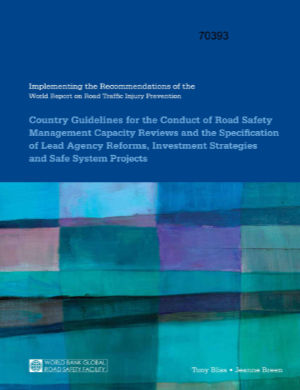
The World Health Organization (WHO) and the World Bank jointly issued the World Report on Road Traffic Injury Prevention on World Health Day 2004, dedicated by the WHO to the improvement of global road safety. The report’s publication signaled a growing concern in the global community about the scale of the health losses associated with escalating motorization and a recognition that urgent measures had to be taken to sustainably reduce their economic and social costs. Implementing the report’s recommendations has become a high priority for low and middle-income countries and the guidelines presented in this report have been prepared to assist this task.
The guidelines promote a Safe System approach to road safety and specify a management and investment framework to support the successful implementation of the World Report recommendations. They include practical procedures designed to accelerate knowledge transfer and sustainably scale up country investment to improve road safety results. They set out detailed steps for the conduct of country road safety management capacity reviews and the related specification of lead agency reforms, investment strategies and Safe System projects designed to overcome revealed safety management capacity weaknesses.
The guidelines have been prepared to assist country road safety professionals, World Bank and regional development bank staff, international consultants, community groups, private sector organizations, and all other global, regional and country partners and stakeholders undertaking country road safety investments.
Voluntary Global Performance Targets for Road Safety Risk Factors and Service Delivery Mechanisms and Corresponding Indicators
This document enumerates the targets, indicators and service delivery mechanisms for reducing road safety risk factors.
Strategies to Tackle the Issue of Speed for Road Safety in the Asia-Pacific Region: Implementation Framework
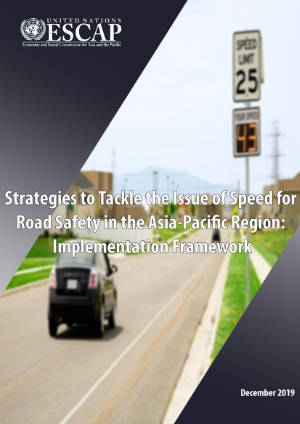
As has been underscored at a number of key global events and in numerous documents published over the last decade, improving road safety is now an urgent global priority. The unfortunate reality is that road safety programmes and policies have failed to address the increase in the number of vehicles on roads and the average speed at which vehicles are travelling. This has exacerbated an already grave global road safety crisis.
The laws of physics relating to speed mean that all countries and regions would benefit from reductions in average vehicular speeds. Indeed, there is a direct correlation between vehicular speeds and the likelihood of people suffering physical harm, with the probability of crashes, injury and death rising as the speed of vehicles increases. Furthermore, vulnerable road users, including pedestrians, cyclists and motorcyclists, are all at high risk of severe or fatal injury in crashes, even at low speeds, because they are poorly protected. The harmful effects of speed also increase on wet, snowy or icy roads. However, any action taken to reduce vehicular speeds helps to reduce the number of crashes, injuries and fatalities, regardless of weather conditions and among all categories of road user.
Ideal speeds are lower than most road users think. Lower vehicular speeds are more economical than high speeds, and can enhance people’s environment, health and quality of life as a result of a reduction in costs associated with crashes, road maintenance, noise, fuel use, and emissions. There is also a turning point at which traffic flow improves with lower speeds.
A safe speed is one that is appropriate not only for the usage/type and quality of the road but also for a country’s vehicular fleet and the type and mix of the road users. The management of vehicular speed therefore includes setting speed limits that reflect those considerations and reduce the likelihood of death or injury in the event of a crash (these are known as survivable speed limits) as well as preventing speed limit violations (speeding).
For this report, a study was conducted to examine speed management in ESCAP member States in order to identify ways in which they can improve speed management. The study revealed that travel speeds on roads in those States are not controlled effectively through survivable speed limits, speeding enforcement, engineering interventions or vehicle safety measures.
Road Safety in the Asia-Pacific Region
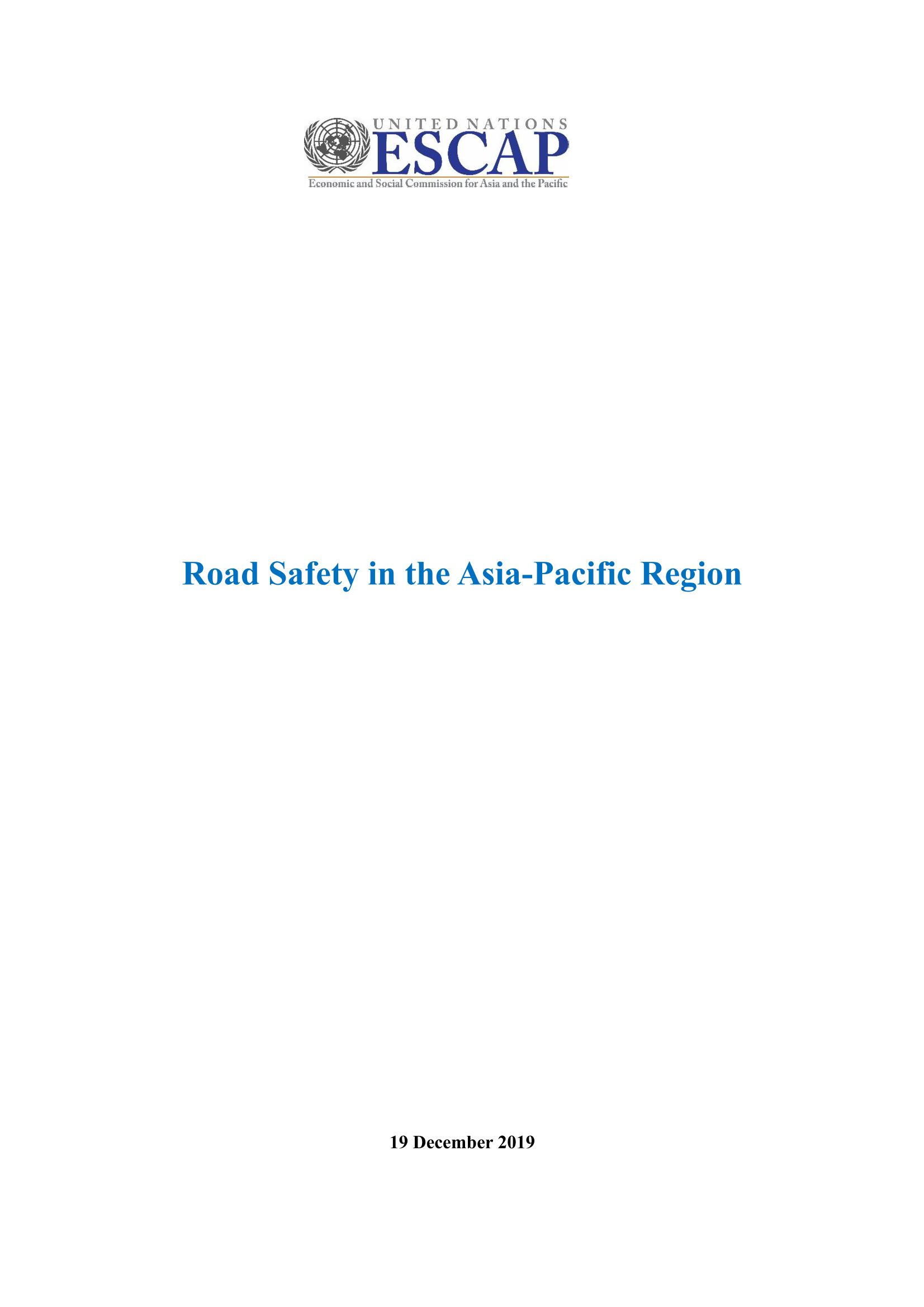
Road safety is a sustainable development challenge for the whole world. The global road traffic deaths and rates of road traffic death remain unacceptably high as an estimated 1.35 million road traffic deaths occurred in 2016 which was about 3,700 road traffic deaths a day.1 Globally, road crashes are the 8th leading cause of death for people of all ages and number one cause of death for children and young adults 5-29 years of age. However, the rates of road traffic death remained constant since the beginning of the millennium, which was about 18 road traffic deaths per 100,000 population.
This report summarizes the analyses of the road safety data from the ESCAP member countries fall under the road safety management pillar of the UN Decade of Action for Road Safety (2011- 2020). This study considered analyzed data involving different pillars and areas of the The United Nations Global Framewor Plan of Action 2018. The pillars and areas under the framewor are shown in Figure 5 of the Appendix 2 of this report.
Pagination
- Previous page
- Page 7
- Next page